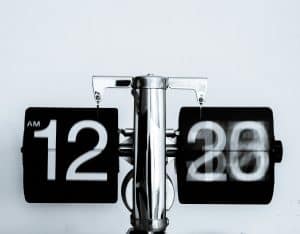How Timer Widgets Can Improve User Experience and Drive Results
Unfortunately, there are no endless promotions: any offer is limited in time, but not all your customers may know about it. In this case, you can use the timer widget. It will create the FOMO effect and force the user to act faster and more decisively. In this post, we will look at the influence of timer widgets on the user experience and how strategically adding them may provide concrete outcomes.

The Power of Timer Widgets in Digital Experiences
Clock widgets have become necessary tools for improving user experience across many digital platforms. These widgets, which are frequently perfectly incorporated into programs and webpages, serve various functions, from enhancing productivity to instilling a feeling of urgency.
Moreover, timer widgets, as the name implies, are graphical components that show countdowns or timers. Such widgets can be basic countdown timers that count down to a specified event or deadline, or they can be more complicated, with features such as personalization and progress tracking.
Enhancing User Engagement
From creating a thrilling countdown to a limited-time offer to fostering focused productivity, timer widgets are more than just digital clocks. They strategically tap into user behavior, driving action and engagement in different ways:
- Creating a sense of urgency. Timer widget promotes a sense of urgency in consumers, encouraging them to act swiftly to avoid missing out on possibilities. This sense of immediacy can lead to higher conversion and engagement rates.
- Encouraging action. Seeing a countdown timer can motivate users to make a purchase, sign up for a service, or complete a task. The fear of missing out (FOMO) drives users to act promptly, resulting in higher conversion rates.
- Improving focus and productivity. For tasks that require focus and time management, such as studying or working on projects, clock widgets can help users stay on track and avoid distractions. Users can break their work into manageable chunks using the Pomodoro technique (work for 25 minutes, short break) or similar methods by setting a timer for specific intervals. This promotes focused work sessions and helps maintain productivity levels.
Driving Results
Beyond enhancing user engagement, timer widgets also play a crucial role in driving tangible results for businesses and organizations:
- Boosting conversions. In e-commerce, clock widgets are often used to create urgency and incentivize purchases. For example, displaying a countdown timer next to a limited-time offer or flash sale can persuade hesitant shoppers to purchase before the deal expires, increasing conversions and revenue.
- Maximizing event attendance. Timer widgets can remind users of upcoming dates and deadlines when promoting events or webinars. By displaying a countdown to the event, organizers can generate excitement and encourage more people to register or attend, ultimately maximizing participation and engagement.
- Increasing engagement. Companies can employ clock widgets to drive user participation and engagement in their content marketing campaigns. For instance, incorporating a timer into a quiz or poll can create a sense of competition and urgency, motivating users to participate and share their responses.
Best Practices for Implementing Timer Widgets
While clock widgets offer numerous benefits, their effectiveness depends on how they are implemented and integrated into digital platforms. To ensure optimal results, consider the following best practices:
- Strategic placement. Position timer widgets prominently within your interface, ensuring they are easily visible to users. Place the timer in a location on product pages, registration forms, or landing pages where it grabs attention without being intrusive.
- Clear messaging. Explain the timer’s purpose and the desired action from users. Use brief and convincing language to express the severity of the problem and encourage people to take action before time runs out.
- Responsive design. Ensure timer widgets are optimized for different devices and screen sizes to appear accurately and perform smoothly across all platforms. Users who visit your website via desktop computer, tablet, or smartphone should have a consistent experience with the timer.
- Visual appeal. Design clock widgets with visual elements that align with your brand aesthetic and effectively capture user attention. Use colors, animations, and font styles that complement your website or application’s design for a cohesive user experience.
- Customization options. Provide users with the flexibility to customize timer settings based on their preferences and needs. Allow them to adjust timer duration, sound alerts, and visual cues to personalize their experience and cater to diverse user preferences.
Summary
Timer widgets are powerful tools for improving the user experience and driving results in digital environments. They are essential for accomplishing various goals, from enhancing conversions to increasing productivity, by instilling a feeling of urgency, driving action, and optimizing engagement. You can maximize their potential and improve the overall user experience by applying best practices and effectively incorporating timer widgets into your digital platforms.

